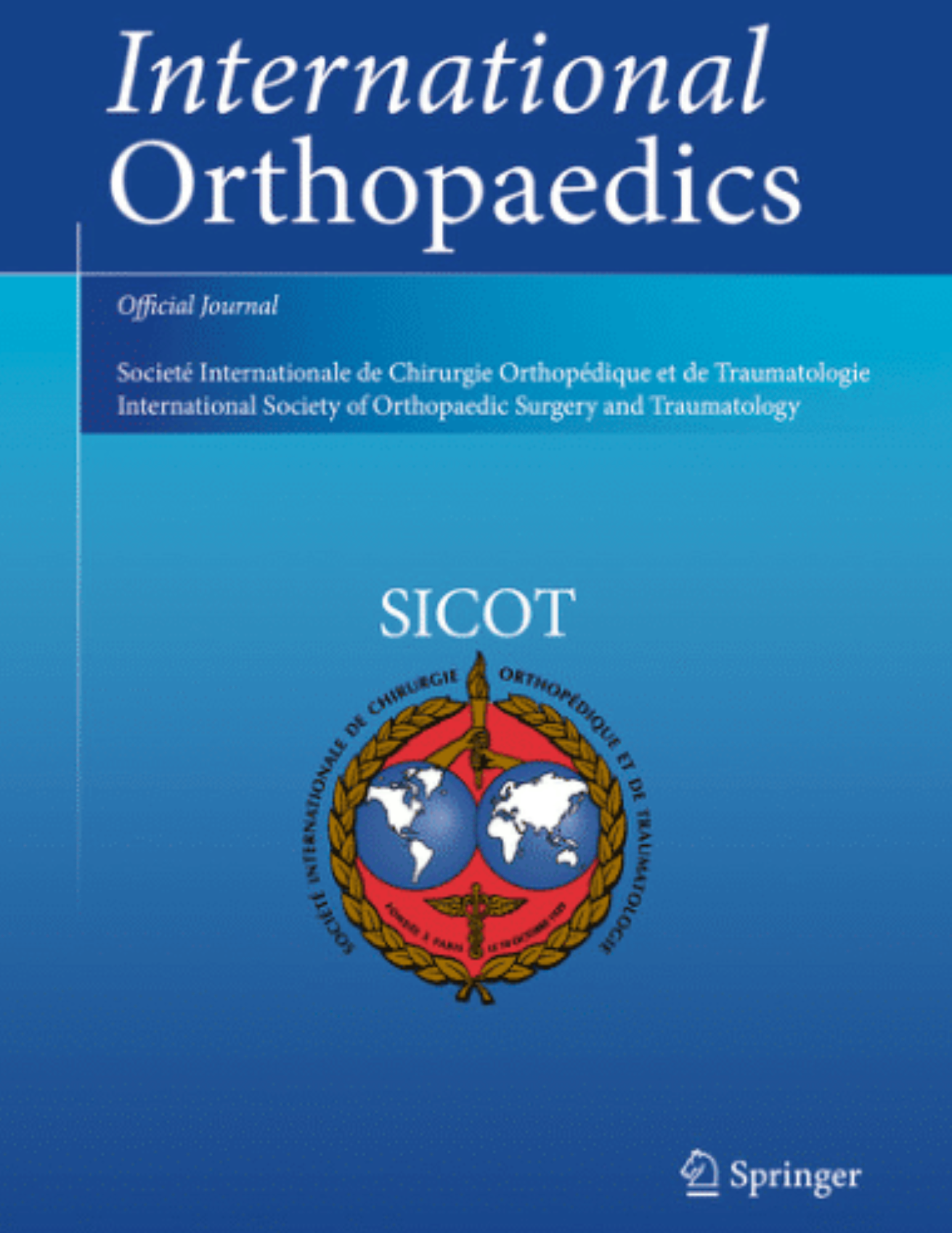
Potential functional benefit of the olecranon memory connector following fracture

Potential functional benefit of the olecranon memory connector following fracture
Design and application of Nickel-Titanium olecranon memory connector in treatment of olecranon fractures: a prospective randomized controlled trial
Int Orthop. 2013 Jun;37(6):1099-105. doi: 10.1007/s00264-013-1878-5. Epub 2013 Apr 18Did you know you're eligible to earn 0.5 CME credits for reading this report? Click Here
Synopsis
40 patients who suffered olecranon fractures were randomized to be treated with either the nickel-titanium olecranon memory connector (OMC) or by locking plate fixation. The purpose was to determine the efficacy of the OMC for functional recovery. After an average of 3.2 years of follow-up, functional recovery assessed through the Mayo Elbow Performance score indicated a significantly better outcome with OMC, whereas functional recovery measured using the Disabilities of the Arm, Shoulder and Hand (DASH) suggested no significant difference between groups.
Was the allocation sequence adequately generated?
Was allocation adequately concealed?
Blinding Treatment Providers: Was knowledge of the allocated interventions adequately prevented?
Blinding Outcome Assessors: Was knowledge of the allocated interventions adequately prevented?
Blinding Patients: Was knowledge of the allocated interventions adequately prevented?
Was loss to follow-up (missing outcome data) infrequent?
Are reports of the study free of suggestion of selective outcome reporting?
Were outcomes objective, patient-important and assessed in a manner to limit bias (ie. duplicate assessors, Independent assessors)?
Was the sample size sufficiently large to assure a balance of prognosis and sufficiently large number of outcome events?
Was investigator expertise/experience with both treatment and control techniques likely the same (ie.were criteria for surgeon participation/expertise provided)?
Yes = 1
Uncertain = 0.5
Not Relevant = 0
No = 0
The Reporting Criteria Assessment evaluates the transparency with which authors report the methodological and trial characteristics of the trial within the publication. The assessment is divided into five categories which are presented below.
3/4
Randomization
2/4
Outcome Measurements
4/4
Inclusion / Exclusion
3/4
Therapy Description
3/4
Statistics
Detsky AS, Naylor CD, O'Rourke K, McGeer AJ, L'Abbé KA. J Clin Epidemiol. 1992;45:255-65
The Fragility Index is a tool that aids in the interpretation of significant findings, providing a measure of strength for a result. The Fragility Index represents the number of consecutive events that need to be added to a dichotomous outcome to make the finding no longer significant. A small number represents a weaker finding and a large number represents a stronger finding.
Why was this study needed now?
Olecranon fractures represent a significant number of fractures occurring around the elbow. Internal fixation, tension-band wiring, plate fixation and intramedullary screws/nails have commonly been used to treat such fractures, although entail limitations. A nickel-titanium olecranon memory connector, made up of an intramedullary fixing lock, a base arc and two compression fixing arms, has been developed as a potential alternative treatment. Accordingly, a comparison to standard treatment methods was needed to determine its efficacy.
What was the principal research question?
What was the efficacy of the olecranon memory connector when compared to locking plate fixation for the treatment of olecranon fractures, assessed at an average of 3.2 years follow-up?
What were the important findings?
- Mean DASH score was 3.3 (+/-4.0) in the OMC group and 4.0 (+/-6.9) in the locking plate group. The difference was not significant (P=0.38).
- Mean MEP score was 86.7 (+/-12.5) in the OMC group and 79.8 (+/-12.3) in the locking plate group. The difference was found to be significant, indicating a superior outcome in the OMC group (P<0.05).
- MEP score for elbow function in the OMC group was excellent in 10 patients (50%), good in 7 (35%), and fair in 3 (15%). For the locking plate group, MEP score was excellent in 5 patients (25%), good in 10 (50%), fair in 4 (20%) and poor in 1 (5%).
- Poor MEP outcome for the locking plate group was due to a postoperative superficial infection. The was the only implant-related complication noted in either group. This also resulted in the patient being dissatisfied with their treatment
- Seventeen patients (85%) of both groups were very satisfied with their treatment. The remaining patients were satisfied with treatment (except for the case described above).
- Groups did not significantly differ with respect to range of motion in flexion, extension, pronation and supination.
What should I remember most?
Functional recovery was significantly better with the olecranon memory connector when measured by the Mayo Elbow Performance score, but no significance was displayed between treatments for the DASH evaluation. Range of motion was not demonstrated to be significantly different between groups.
How will this affect the care of my patients?
These results preliminarily outline the possibility of alternative treatment of olecranon fractures with the olecranon memory connector, with a potential benefit in functional recovery. An investigation with a larger number of patients is required to confirm these results.
Learn about our AI Driven
High Impact Search Feature
Our AI driven High Impact metric calculates the impact an article will have by considering both the publishing journal and the content of the article itself. Built using the latest advances in natural language processing, OE High Impact predicts an article’s future number of citations better than impact factor alone.
Continue



 LOGIN
LOGIN

Join the Conversation
Please Login or Join to leave comments.